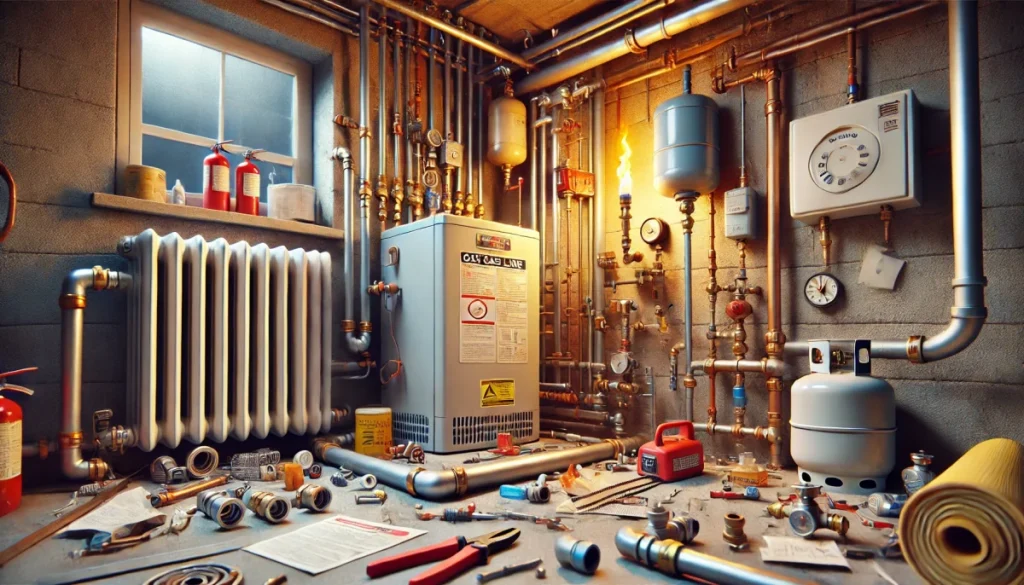The accurate sizing of gas lines is a critical aspect of any gas installation project, whether for residential, commercial, or industrial applications. Improper sizing can lead to a myriad of issues, ranging from inefficient appliance operation to potentially hazardous situations. This section will elucidate the importance of proper gas line sizing, the consequences of incorrect sizing, and the methodologies employed to ensure optimal system performance.
Significance of Proper Gas Line Sizing
Proper gas line sizing is paramount for several reasons:
- Efficient Appliance Operation: Correctly sized gas lines ensure that appliances receive the appropriate volume of gas at the required pressure, enabling them to function at peak efficiency.
- Safety Considerations: Undersized lines can lead to pressure drops and inadequate gas flow, potentially causing incomplete combustion and the production of harmful carbon monoxide.
- System Longevity: Appropriately sized gas lines reduce stress on the system components, potentially extending the lifespan of both the piping and connected appliances.
- Regulatory Compliance: Many jurisdictions have specific codes and regulations governing gas line sizing, and compliance is mandatory for legal and insurance purposes.
Consequences of Improper Sizing
The ramifications of improperly sized gas lines can be significant:
- Insufficient Gas Supply: Undersized lines may not deliver adequate gas volume to appliances, resulting in poor performance, incomplete combustion, or failure to operate.
- Excessive Pressure Drops: When gas lines are too small for the required flow rate, pressure drops can occur, leading to inconsistent appliance operation and potential safety hazards.
- Inefficient Energy Consumption: Improperly sized lines can cause appliances to work harder to achieve the desired output, leading to increased energy consumption and higher utility costs.
- Safety Risks: In extreme cases, undersized lines can lead to gas leaks or appliance malfunctions, posing serious safety risks to occupants.
- Code Violations: Failure to adhere to local gas line sizing regulations can result in failed inspections, fines, or the need for costly system modifications.
Methodologies for Proper Gas Line Sizing
To ensure accurate gas line sizing, professionals employ several methodologies:
- Longest Length Method: This approach considers the longest run of piping from the point of delivery to the most remote outlet. It accounts for the total gas load and pressure drop over this distance to determine the minimum acceptable pipe size.
- Branch Length Method: This method is used for more complex systems with multiple branches. It calculates the size of each branch independently based on its length and the appliances it serves.
- Hybrid Pressure Systems: In some cases, a combination of high-pressure and low-pressure systems may be employed, requiring careful calculation of pressure regulators and pipe sizes at different stages of the system.
- Computerized Sizing Programs: Advanced software tools are available that can perform complex calculations, taking into account factors such as elevation, gas composition, and simultaneous appliance usage patterns.
Factors Influencing Gas Line Sizing
Several factors must be considered when sizing gas lines:
- Gas Type: Different gases (e.g., natural gas, propane) have varying properties that affect flow characteristics and required pipe sizes.
- Total Gas Load: The cumulative demand of all connected appliances must be accurately calculated.
- Allowable Pressure Drop: The maximum permissible pressure drop from the point of delivery to the appliance must be determined and adhered to.
- Pipe Material: Different materials (e.g., steel, copper, CSST) have varying flow characteristics that impact sizing calculations.
- System Configuration: The layout of the piping system, including lengths, fittings, and elevation changes, affects sizing requirements.
- Future Expansion: Consideration should be given to potential future additions to the system to avoid undersizing.
Best Practices for Gas Line Sizing
To ensure proper gas line sizing, the following best practices should be observed:
- Engage Qualified Professionals: Gas line sizing should be performed by licensed professionals with expertise in gas system design and local code requirements.
- Conduct Thorough Load Calculations: Accurate determination of the total gas load, including diversity factors and simultaneous usage patterns, is essential.
- Use Current Codes and Standards: Ensure that all calculations and designs comply with the latest editions of relevant codes and standards (e.g., NFPA 54, IFGC).
- Document All Calculations: Maintain detailed records of all sizing calculations, including assumptions and methodologies used, for future reference and compliance purposes.
- Perform Regular System Assessments: As appliances are added or removed from the system, reassess the gas line sizing to ensure continued adequacy.
In conclusion, proper gas line sizing is a critical component of safe and efficient gas system design. By employing appropriate methodologies, considering all relevant factors, and adhering to best practices, professionals can ensure that gas lines are sized correctly, promoting optimal system performance and safety.



